- News
- Reviews
- Bikes
- Accessories
- Accessories - misc
- Computer mounts
- Bags
- Bar ends
- Bike bags & cases
- Bottle cages
- Bottles
- Cameras
- Car racks
- Child seats
- Computers
- Glasses
- GPS units
- Helmets
- Lights - front
- Lights - rear
- Lights - sets
- Locks
- Mirrors
- Mudguards
- Racks
- Pumps & CO2 inflators
- Puncture kits
- Reflectives
- Smart watches
- Stands and racks
- Trailers
- Clothing
- Components
- Bar tape & grips
- Bottom brackets
- Brake & gear cables
- Brake & STI levers
- Brake pads & spares
- Brakes
- Cassettes & freewheels
- Chains
- Chainsets & chainrings
- Derailleurs - front
- Derailleurs - rear
- Forks
- Gear levers & shifters
- Groupsets
- Handlebars & extensions
- Headsets
- Hubs
- Inner tubes
- Pedals
- Quick releases & skewers
- Saddles
- Seatposts
- Stems
- Wheels
- Tyres
- Health, fitness and nutrition
- Tools and workshop
- Miscellaneous
- Cross country mountain bikes
- Tubeless valves
- Buyers Guides
- Features
- Forum
- Recommends
- Podcast
review
£2,599.99
VERDICT:
Gravel bike at the sportier end of the spectrum that balances performance with comfort – it's a blast to ride
Good balance of comfort and stiffness
GRX800 1x gives great shifting performance
Geometry works both on and off road
Press-fit BB won't be everyone's cup of tea
Less tyre clearance than some competitors
Weight:
8,870g
Contact:

This product has been selected to feature in road.cc recommends. That means it's not just scored well, but we think it stands out as special. Go to road.cc recommends
At road.cc every product is thoroughly tested for as long as it takes to get a proper insight into how well it works. Our reviewers are experienced cyclists that we trust to be objective. While we strive to ensure that opinions expressed are backed up by facts, reviews are by their nature an informed opinion, not a definitive verdict. We don't intentionally try to break anything (except locks) but we do try to look for weak points in any design. The overall score is not just an average of the other scores: it reflects both a product's function and value – with value determined by how a product compares with items of similar spec, quality, and price.
What the road.cc scores meanGood scores are more common than bad, because fortunately good products are more common than bad.
- Exceptional
- Excellent
- Very Good
- Good
- Quite good
- Average
- Not so good
- Poor
- Bad
- Appalling
Orro has taken its highly capable gravel bike and given it a new clean look as the Terra C GRX800 with new internal cable routing. The great thing is Orro hasn't touched the fun handling and balance of comfort versus performance that made its predecessor so enjoyable. This 2021 model also comes with Shimano's top-flight mechanical gravel groupset, for not a huge amount of money.
I first rode a Terra C back in March 2020 and liked it, mostly because even though it was then called 'Adventure,' it actually has a racy side to its personality.
Its 8.87kg (19.55lb, size medium) weight gives it a sprightly feel, which makes it a great bike for those days when you just want to travel light and have a blast on the gravel tracks or forest trails.
> Find your nearest dealer here
It's nippy off the mark and I just love it when the singletrack dries out enough to tackle at full speed, the Terra C hopping over tree roots and changing direction with a flick of the wrists or shimmy in body position on the technical sections.
It feels really balanced and poised, Orro having just got the speed of the steering to be entertaining enough without becoming a challenge or tiring when really going for it on a loose surface.
A 71° head angle is pretty typical for a bike of this ilk, and it works here, just taking the urgency off the handling. Dropping down steep, very technical descents with rocks and roots just dying to whip your front wheel from beneath you, the steering remains very smooth, and you can really feel what the Terra C is up to beneath you.
On faster downhills you can just let the Orro go (you have the backup of the excellent GRX brakes, should the proverbial hit the fan), with the 1,031mm wheelbase giving a smooth, controllable bike through the bends, even when the tyres are scrabbling about beneath you.
This size frame has a 74.2° seat angle, which puts you in quite a forward, aggressive race position. It really lets you get the power down when in the saddle which, when matched to the impressive stiffness of the lower half of the frame, allows you to keep the pace up over undulating terrain or when hitting those short, sharp climbs.
Comfort wise, the Terra C is a firm bike, but Orro has managed to stop at just the right point before things turn harsh.
On a couple of rides I ran the Panaracer GravelKing Semi Slick Plus tyres to see how the Terra C behaved as a more road-orientated machine for the commute etc.
Pumped up hard for the road, I couldn't resist darting off down a gravel by-way I spotted out of the corner of my eye. While the route was reasonably smooth (small aggregate on a hard packed surface), it was still much rougher than the road I'd just left.
I could feel the bike bouncing around beneath me, but the main contact points – wrists, hands and backside – weren't taking any unnecessary punishment. The frame and fork take enough of the edge off, helped also by the large amount of seatpost you can leave exposed.
How does it perform as a commuter or road machine? All in all, pretty good.
The handling is slightly slower than an endurance road bike's (but not so much I found it an issue on anything but the most technical of downhills), and the 1x cassette is a little gappy. The Terra C is available in 2x builds though, if that's more your thing.
Frame and fork
So, the biggest change for 2021 is the front-end cable routing. Towards the end of 2020 (when most of the 2021 models are released), I saw a big switch to bikes having their cables hidden pretty much completely. Orro even did it with its own Venturi STC SRAM Force eTap.
On the Terra C, the cables and hoses leave the confines of the handlebar tape as per usual, but instead of entering the frame at the down tube, they disappear into the head tube before starting their journey to the brakes and mechs.
Not only does this give a really smooth look to the front of the bike, it means there is zero cable rub on the frame. Also, on a bike that's likely to be used in wooded areas, there's no chance of the cables catching when the trail gets overgrown.
When it comes to the shape and design of the frame and fork, Orro develops its own moulds rather than buying off the shelf frames or sections. It's a big investment, but one that gives them lots of control over the finished product.
I've ridden a fair few of Orro's bikes now, and they all show the designers know a thing or two about delivering on the stiffness front while retaining good levels of comfort. The majority of that balance comes from the carbon lay-up, tuning wall thicknesses and tube shapes to reduce flex where you don't want it and add it where you do.
To protect areas like the wide, flat bottom edge of the down tube, Orro has incorporated Innegra. It's a tough, durable lightweight fibre whose yarns can be woven with others to increase strength, while not adding a huge amount of weight in these strategic areas.
This should go a good way to protecting the down tube from large stones being pinged up by the front tyre.
> 27 of the best 2021 gravel bikes & adventure road bikes
As I mentioned, the cables/hoses go through the head tube and exit as close as possible to the brakes and mech for plenty of coverage from the elements. This is a 1x set up, but should you want to change to a 2x, you'll find all the bolt positions ready to accept a front mech.
There are also mounting points for mudguards and a rear rack, and there is provision for a third bottle cage under the down tube. The bolts for the mudguards are exactly where they need to be for fitting off-the-shelf components. It's a versatile bit of kit.
To achieve the high stiffness, Orro has gone for a press-fit bottom bracket. Pressing the bearing cups into the frame, rather than having them sat outboard, means you can make the bottom bracket shell wider. The tubes that meet it can be wider too, for increased flex reduction. This is achieved without increasing the Q-factor, the distance between the cranks.
Press-fits have a reputation for letting water and grit get between the bearing cups and the frame, though, which creates noise and increased wear. As I've said before, I've noticed this becoming less of an issue over the last year or so, on test bikes that see plenty of crap weather and abuse in the mud.
Our test periods only cover about 4-6 weeks though, which is a limited time to test durability.
> 34 bikes with 1X gearing – is single-chainring simplicity best?
Tyre clearance is 42mm, which isn't class leading but is still perfectly usable, especially given the Terra C's racy nature. While it depends on where you ride, for me I'd say the minimum tyre width is around 40mm. That covers me for quite rocky gravel tracks, bits of singletrack through the woods and smaller, loose aggregates.
My own gravel bike is running 43mm GravelKings, which I really like for stability, so the Orro gets close enough to feel right at home on most surfaces.
The Terra C is available in five sizes from XS to XL, or for those who go by top tube length, 508mm to 604mm. This medium has a 553mm top tube, 165mm head tube and 510mm seat tube.
With the angles I mentioned earlier, that gives a stack and reach of 587mm and 387mm respectively.
Finishing kit
The Terra C comes in a selection of builds, of which we have the Shimano GRX 800 option. Shimano took a bit of time to join the gravel groupset market, but what they've achieved with the GRX line-up is very impressive.
The 800 group is the top level of their mechanical shifting groupsets (there is a Di2 option), and with shifting levels easily matching Ultegra regardless of the conditions, I find it hard to fault.
The 800 shifters (unlike the others in the lineup) have raised ridges on the hoods for grip when the going gets rough. When you're getting bounced around there is still good traction for your hands or gloves, even in the wet.
One thing that all GRX levers get, though, is a flat front edge. This gives you a really good platform when braking hard on uneven surfaces, and it's what sets the GRX levers apart.
GRX is sold in many configurations, but this model of Terra C uses the 1x with a wide ranging 11-42t cassette and a 40t chainring. As I said, it's a little gappy on the road or smooth gravel surfaces, but everywhere else it gives you a good spread of ratios to tackle most things. I certainly didn't spend a lot of time out of the saddle.
The Shimano brake rotors and calipers aren't going to let you down. The power is very progressive and, should you need to stop quickly, the speed will just drop off without locking up the wheels. Lever feel is high, which allows you to really control things.
When it comes to the cockpit, Orro hasn't scrimped on components. The handlebar is Deda's Gravel100, which gives a very comfortable ride feel and a 12° flare for a welcome 60mm extra width in the drops, meaning stability on the rough stuff at speed. Deda also provides the stem, a Zero 1.
The seatpost is Orro branded, as is the saddle (even though the website says it's a Prologo Kappa RS), and it's decent kit. I found the saddle comfortable on a couple of four-hour rides which were mostly off-road.
Wheels and tyres
This Terra C comes shod with a set of Fulcrum Rapid Red 5 wheels, the Italian brand's gravel-specific wheelset. I gave these a thorough test back in 2019 and was very impressed.
At 1,650g they are sprightly, and with 24 spokes front and rear they take plenty of abuse too, so unless you're looking to save a huge amount of weight or want something a little more bling, I don't see much point in upgrading until they wear out.
Tyre wise we've got Vredestein Aventura. They offer a decent balance of off-road grip and low rolling resistance on the road, so if you're chopping and changing terrain and don't want the faff of swapping tyres, they are a good compromise.
The tread works okay on hardpacked gravel and dry mud trails, and they are fine on grass too. If you are spending a lot of time off-road in the winter, though, I'd definitely go for something with deeper knobbles.
On the road they grip pretty well, even when taking fast bends at 40mph, and roll along at a decent lick too.
A lot of my rides take me over country lanes that are currently covered in hedge cuttings, but thankfully I didn't suffer a single puncture, so I'm happy with the Vredestein's resistance levels.
Value
This version of the Terra C comes in at £2,599.99. You can also have a Campagnolo Ekar version for £3,499.99 in this frame colour. That compares well to the Fuji Jari Carbon 1.3 I'm currently testing alongside the Orro.
The Fuji is £2,799.99 and, while its description mentions a top end GRX groupset, it uses a real mix of components from across the range – an RX812 rear mech, RX600 shifters and RX400 brakes – unlike the Orro, which has a full 800 set.
It's something I see quite often on bike builds, and goes to show the kit on offer isn't always to the same spec level as the Terra C.
> 25 of the best gravel bike tyres — get the right go-anywhere rubber
I'm a big fan of the Canyon Grail and the Terra C's racy sort of nature reminds me a lot of it. The Grail CF SL 7 will set you back £2,649.
It's a full carbon frame and fork like the Terra C, and you are getting the dual-layer 'Hover' bar, which does divide opinion. I think it's awesome by the way, even though you can't fit lights, a computer and so on to it.
Again, it's a bit of a mixture on the component front: a bit of GRX800 here, a bit of GRX600 there. Again it helps highlight what decent value for money the Orro is.
Conclusion
I was a big fan of the Terra C's style and quality before, and that hasn't changed for 2021. It's a bike that just lets you have fun – a race bike for off-road, if you like – but one that can just be pootled along enjoying the scenery should the mood arise. It's a lot of bike for the money.
Verdict
Gravel bike at the sportier end of the spectrum that balances performance with comfort – it's a blast to ride
road.cc test report
Make and model: Orro Terra C GRX800
Size tested: Medium
About the bike
List the components used to build up the bike.
Stem: Deda Zero 1
Saddle: Orro
Bottom Bracket: BB86
Shifters: Shimano GRX800
Frame: ORRO Terra C
Fork: ORRO Terra C
Rear Derailleur: Shimano GRX800
Cassette: Shimano GRX800 11-42T
Wheelset: Fulcrum Rapid Red 5
Brake Calipers: Shimano GRX800
Handlebar: Deda Gravel 100 Flared
Tyres: Vredestein Aventura 38c
Chainset: Shimano GRX800 40T
Tell us what the bike is for and who it's aimed at. What do the manufacturers say about it? How does that compare to your own feelings about the bike?
Orro says: "Terra C is characterised by its light responsive ride quality, built with the specifications necessary to provide capable control across varied terrain. An adaptive bike crafted to ensure that your next adventure, new route, or old commute is a total blast.
The frame geometry is poised to descend and corner with ease inspiring confident off-road handling. Take it back to the tarmac and the excellent power transfer provided by the carbon layup is immediately apparent. Innegra fibres are woven into the carbon at strategic locations to protect the frame from impact damage; this ensures the 'light and fast' design ethos is met with the durability riders expect."
This is a bike that focuses on the fun and fast areas of gravel riding.
Where does this model sit in the range? Tell us briefly about the cheaper options and the more expensive options
Sitting above this model is the Campagnolo Ekar-equipped version, while there are various models below using various 1x and 2x groupsets from Shimano and SRAM.
Frame and fork
Overall rating for frame and fork
8/10
Tell us about the build quality and finish of the frame and fork?
Manufactured and finished to a high quality.
Tell us about the materials used in the frame and fork?
Both the frame and fork are carbon fibre, with Innegra for added strength to deal with the rough abuse from gravel tracks.
Tell us about the geometry of the frame and fork?
The geometry is aimed at a more aggressive riding style than a lot of gravel/adventure bikes. It has a steep seat angle and relatively short head tube, which allows you to really get the power down. The head angle is slackened off a touch from that found on a road bike, which keeps the handling fun but controllable off-road.
How was the bike in terms of height and reach? How did it compare to other bikes of the same stated size?
The medium model has a stack of 587mm and a reach of 387mm, which is typical for the size of bike. It gives a ratio of 1.55, which is very similar to most endurance road bikes.
Riding the bike
Was the bike comfortable to ride? Tell us how you felt about the ride quality.
For a firm, stiff frameset it delivers good levels of comfort.
Did the bike feel stiff in the right places? Did any part of the bike feel too stiff or too flexible?
No issues with stiffness at all. The use of the wide BB86 bottom bracket means the larger tube profiles resist any flex under pedalling loads.
How did the bike transfer power? Did it feel efficient?
Due to the stiffness of the frameset, power transfer and efficiency levels are good.
Was there any toe-clip overlap with the front wheel? If so was it a problem?
No.
How would you describe the steering? Was it lively neutral or unresponsive? Quick enough off-road to be fun, while being more neutral on it.
Tell us some more about the handling. How did the bike feel overall? Did it do particular things well or badly?
The steering has a good balance of directness without ever entering the twitchiness side of things. Plenty of feedback from the frame and fork really lets you know what the tyres are up to, on or off-road.
Which components had the most effect (good or bad) on the bike's comfort? would you recommend any changes?
The Deda handlebar has good damping and the flare brings extra stability.
Which components had the most effect (good or bad) on the bike's stiffness? would you recommend any changes?
The cockpit feels stiff, which allows you to get out of the saddle and really go for it.
Which components had the most effect (good or bad) on the bike's efficiency? would you recommend any changes?
The large spread of gears helps both the up and downhills.
Rate the bike for efficiency of power transfer:
8/10
Rate the bike for acceleration:
8/10
Rate the bike for sprinting:
8/10
Rate the bike for high speed stability:
8/10
Rate the bike for cruising speed stability:
8/10
Rate the bike for low speed stability:
8/10
Rate the bike for flat cornering:
8/10
Rate the bike for cornering on descents:
8/10
Rate the bike for climbing:
8/10
The drivetrain
Rate the drivetrain for performance:
9/10
Rate the drivetrain for durability:
8/10
Rate the drivetrain for weight:
8/10
Rate the drivetrain for value:
7/10
Tell us some more about the drivetrain. Anything you particularly did or didn't like? Any components which didn't work well together?
This top end GRX groupset really can't be faulted, to be honest. Top quality shifting and braking regardless of conditions.
Wheels and tyres
Rate the wheels for performance:
8/10
Rate the wheels for durability:
8/10
Rate the wheels for weight:
7/10
Rate the wheels for comfort:
7/10
Rate the wheels for value:
6/10
Tell us some more about the wheels.Did they work well in the conditions you encountered? Would you change the wheels? If so what for?
Decent-quality wheels that can stand up to daily abuse on gravel tracks, and light enough to not hamper the performance of the bike.
Rate the tyres for performance:
7/10
Rate the tyres for durability:
8/10
Rate the tyres for weight:
7/10
Rate the tyres for comfort:
7/10
Rate the tyres for value:
6/10
Tell us some more about the tyres. Did they work well in the conditions you encountered? Would you change the tyres? If so what for?
A pretty versatile tyre for a range of terrains, and robust too. You'll need deeper tread for wet mud, though.
Controls
Rate the controls for performance:
8/10
Rate the controls for durability:
8/10
Rate the controls for weight:
7/10
Rate the controls for comfort:
8/10
Rate the controls for value:
6/10
Tell us some more about the controls. Any particularly good or bad components? How would the controls work for larger or smaller riders?
For the overall price there are some quality components here, and I especially like the choice of flared bar for extra stability on the trails.
Your summary
Did you enjoy riding the bike? Yes
Would you consider buying the bike? Yes
Would you recommend the bike to a friend? Yes
How does the price compare to that of similar bikes in the market, including ones recently tested on road.cc?
It is well specced for the money, as seen when compared to the Fuji and Canyon mentioned in the review.
Rate the bike overall for performance:
8/10
Rate the bike overall for value:
7/10
Use this box to explain your overall score
The Terra C GRX800 is a good all round package, mixing a quality frameset with well-chosen components and a refined ride feel.
About the tester
Age: 42
I usually ride: This month's test bike My best bike is: B'Twin Ultra CF draped in the latest bling test components
I've been riding for: Over 20 years I ride: Every day I would class myself as: Expert
I regularly do the following types of riding: time trialling, commuting, club rides, sportives, fixed/singlespeed,
Since writing his first bike review for road.cc back in early 2009 senior product reviewer Stu has tested more than a thousand pieces of kit, and hundreds of bikes.
With an HND in mechanical engineering and previous roles as a CNC programmer/machinist, draughtsman and development engineer (working in new product design) Stu understands what it takes to bring a product to market. A mix of that knowledge combined with his love of road and gravel cycling puts him in the ideal position to put the latest kit through its paces.
He first made the switch to road cycling in 1999, primarily for fitness, but it didn’t take long for his competitive side to take over which led to around ten years as a time triallist and some pretty decent results. These days though riding is more about escapism, keeping the weight off and just enjoying the fact that he gets to ride the latest technology as part of his day job.
Latest Comments
- brooksby 2 sec ago
Then someone really needs to tell the council…
- andystow 4 min 18 sec ago
That article is far too kind to Moses. I highly recommend reading The Death and Life of Great American Cities. Despite the title, it applies to...
- RobD 27 min 21 sec ago
Curious as to why not? I can understand people's concerns about hookless, I was just wondering why you wouldn't buy hooked?
- David9694 1 hour 1 min ago
Unpopular opinion - I think the information available when this story was first written up was pretty sketchy....
- chrisonabike 2 hours 1 min ago
Hub brakes have their own trade-offs. I actually liked the one I had for its particular application - in a "utility" bike where I didn't care...
- qwerty360 2 hours 12 min ago
Given that every other lime bike I see on my 1/week commute into london appears to have its rear light hanging off by the cable rather than mounted...
- Miller 3 hours 33 min ago
Go for it Pogi! I will be in the velodrome on 13th April and it would be fantastic to see him arrive.
- jaymack 3 hours 56 min ago
Indeed but he's a can't. Can't be arsed to tell the truth, can't be arsed to build new Hospitals and can't be arsed to do anything for anyone save...
- chrisonabike 7 hours 1 min ago
What wokery is this? I thought those tech-bros were there to save us from the "mind virus"?
- hawkinspeter 19 hours 48 min ago
Opposition to controversial East Bristol Liveable Neighbourhood ‘will filter away’ say council bosses...





































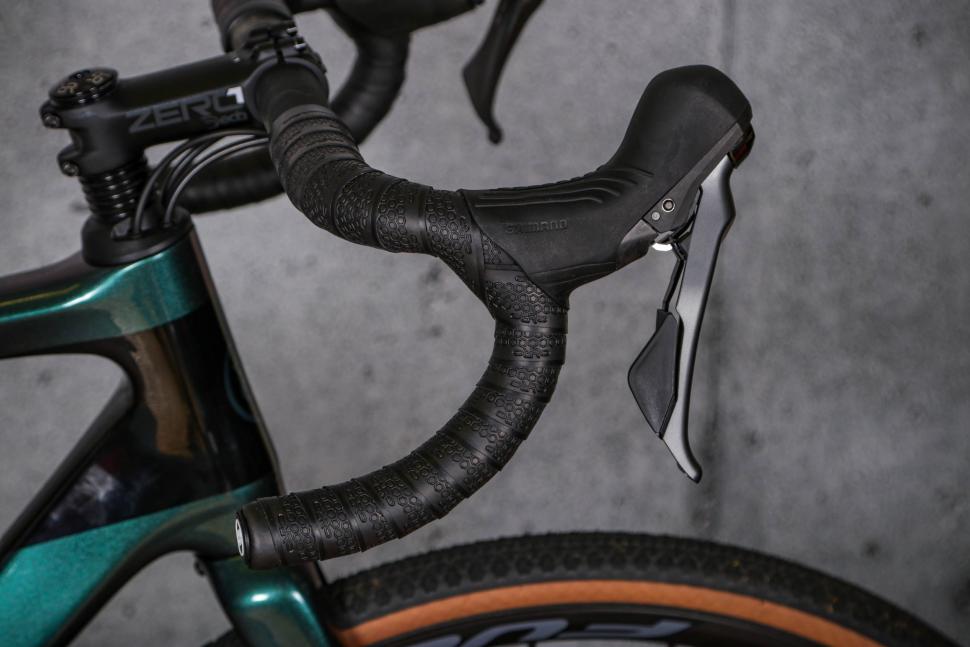




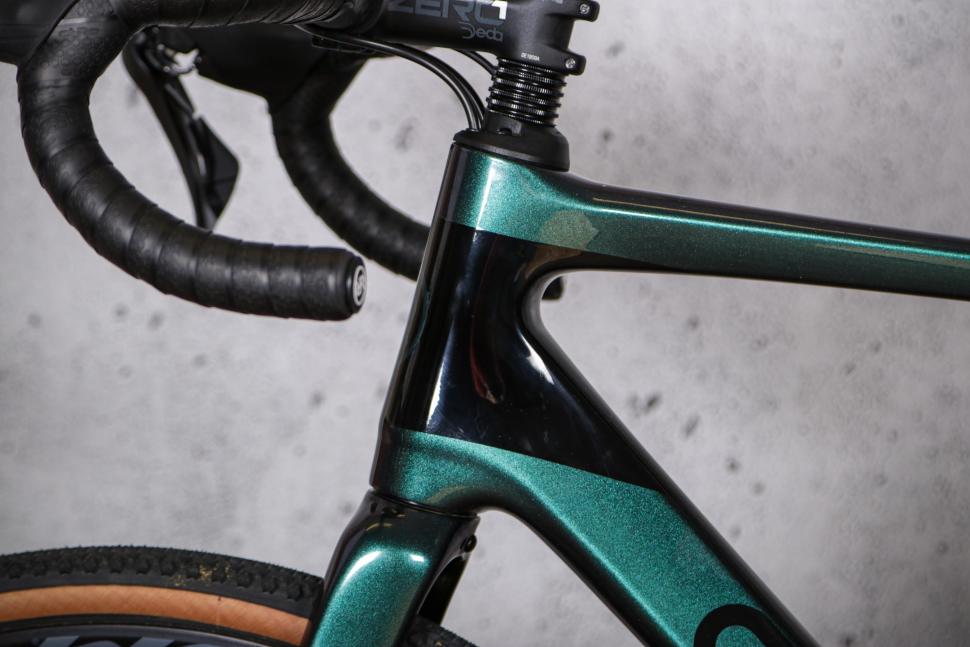
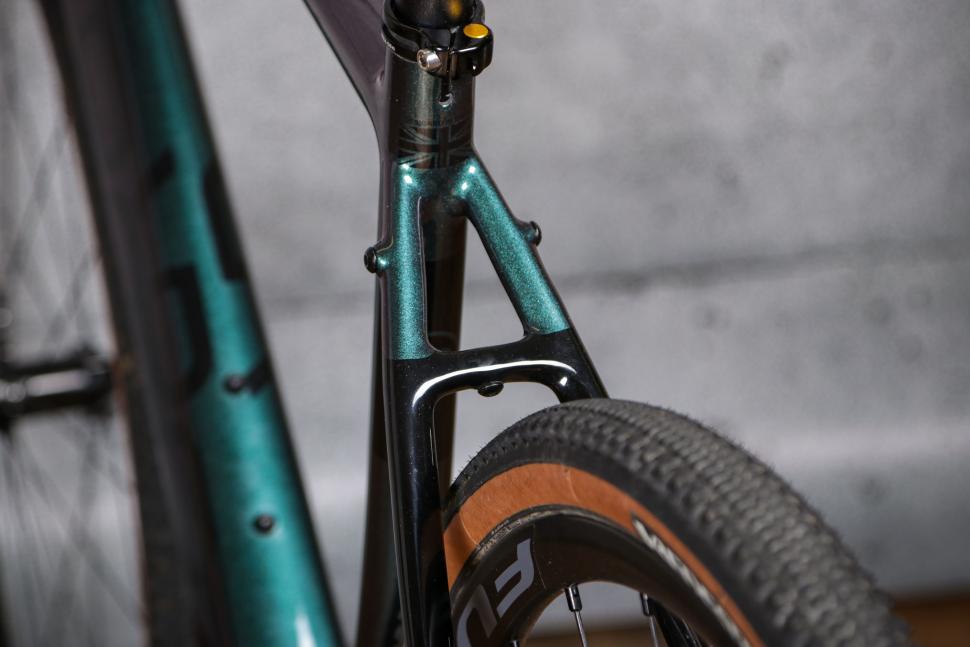




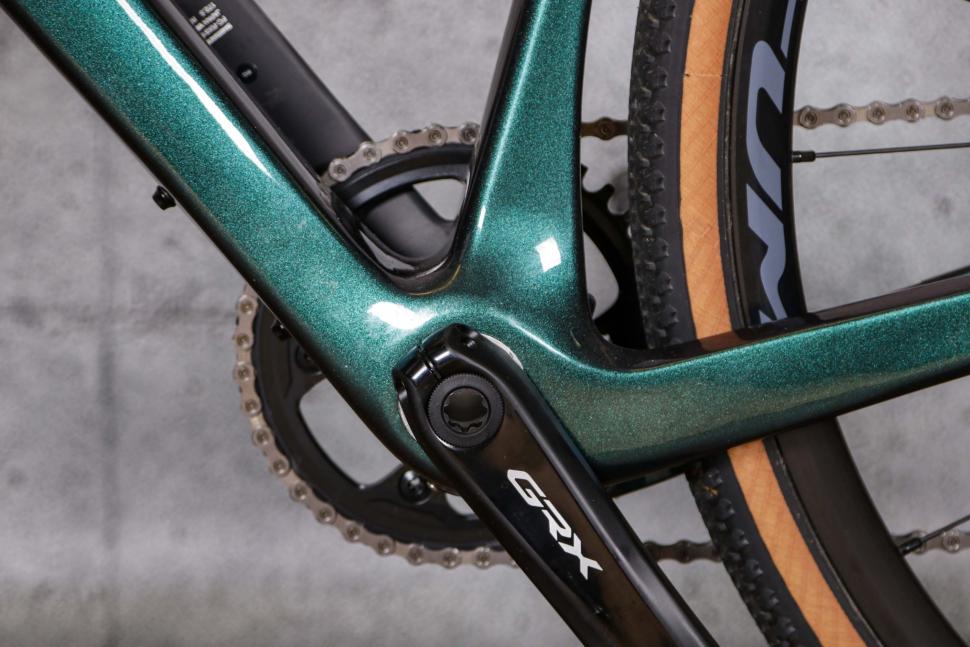
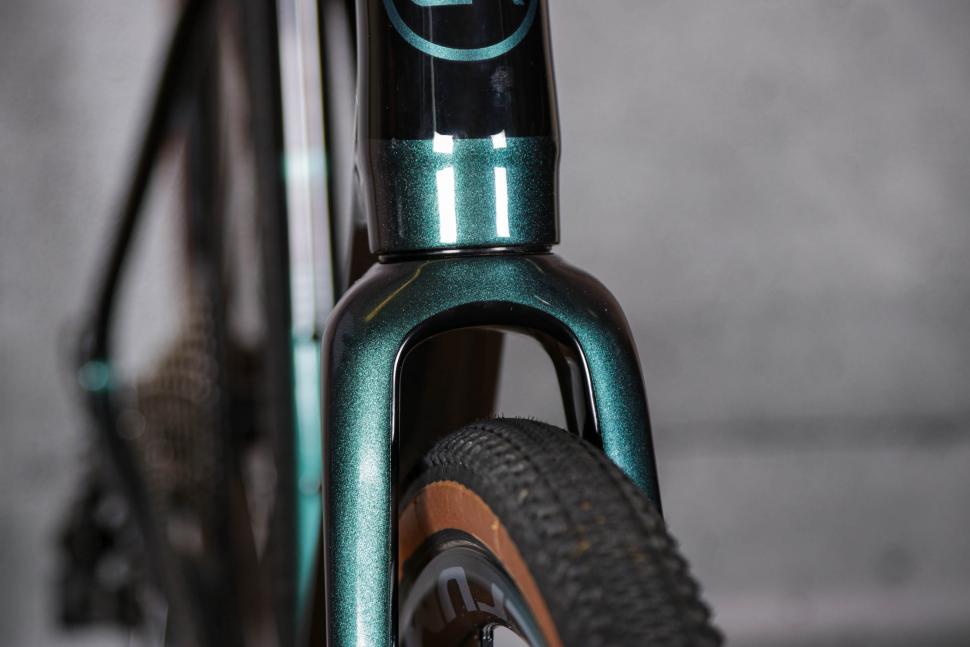




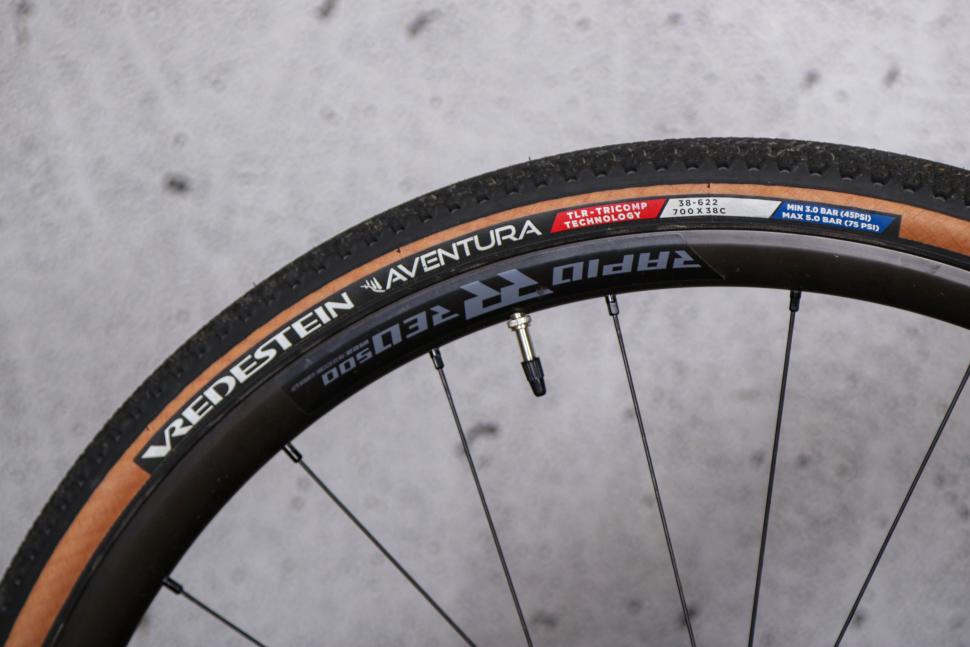
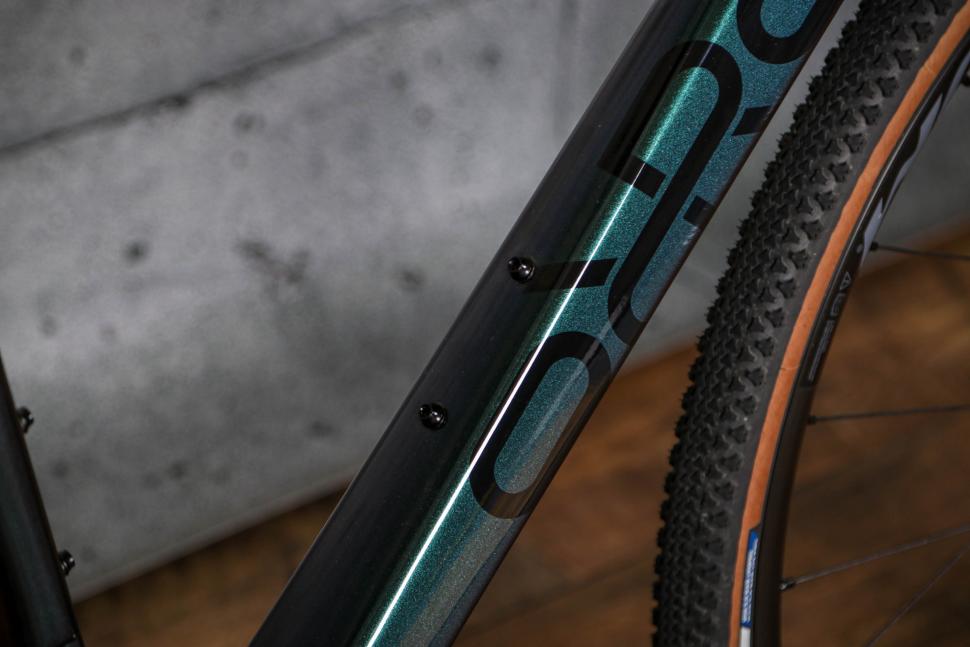

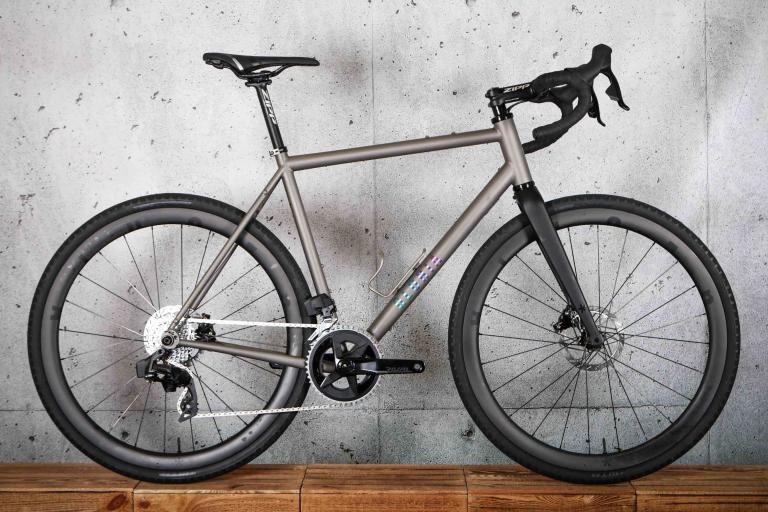
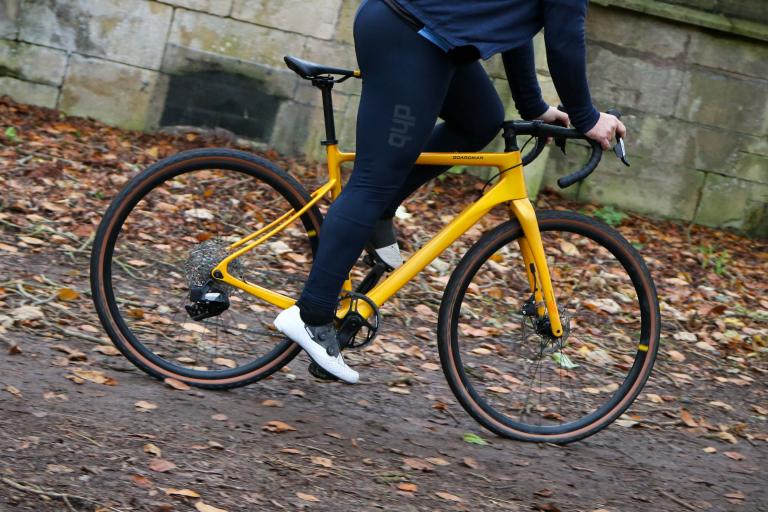
Add new comment
3 comments
Picked one of these up last April for £1200 for the 105 model. Very tidy and well put together bikes. Think it will be a while before we see bargains like that again...
Bad past experiences mean that one of these would be at the top of my wish list if not for the pressfit BB. At the moment the Ribble CGR SL seems the winner instead
Whilst I would generally agree with, you press fit isn’t always the culprit. I have an aluminium Terra, had the dreaded creaking, turned out to be the rear skewer. I wouldn’t be put off buying one of these at all. Geometry is excellent , decent bikes.